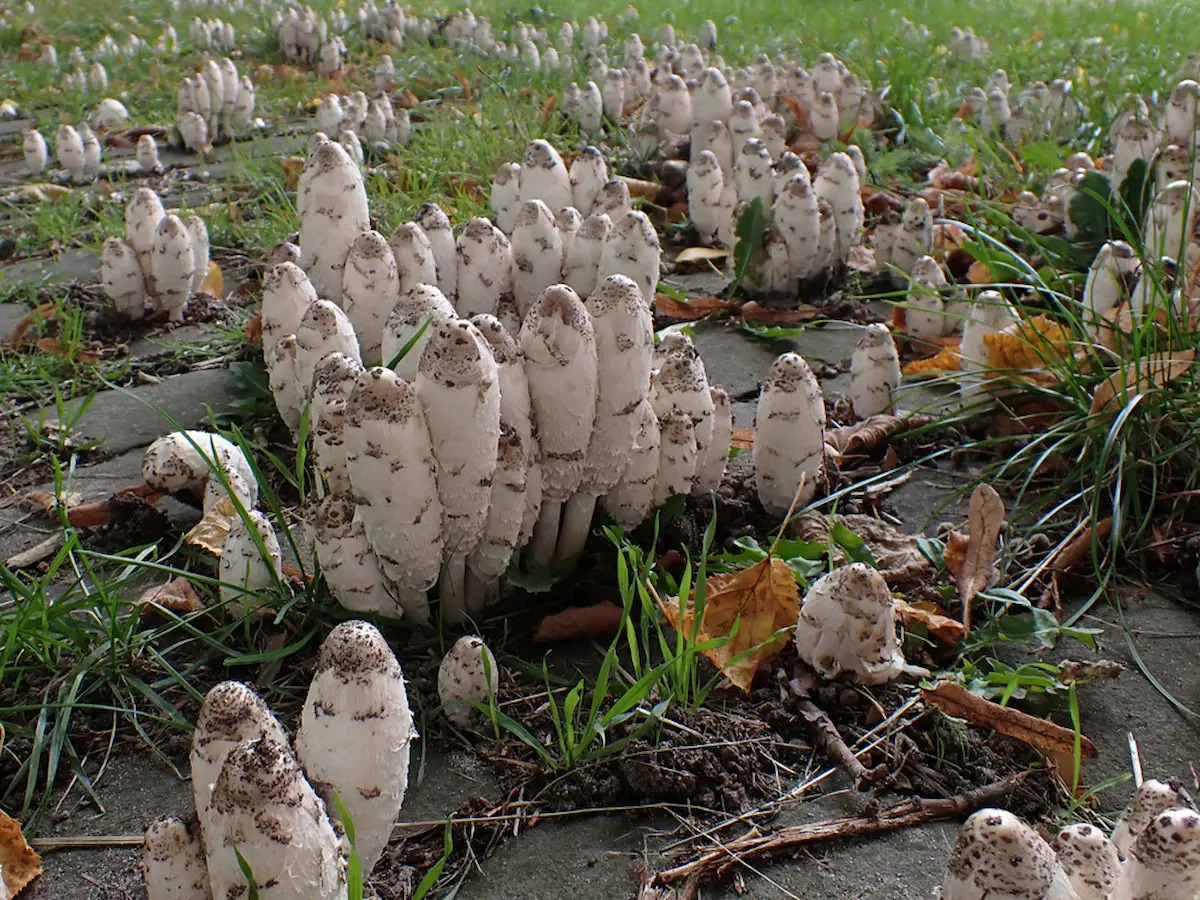Every year since 1994, the German Society for Mycology (DGfM) has chosen one of the more than 10,000 large fungi native to Europe as Mushroom of the Year. On the one hand, this election is of course about the species itself, on the other hand, each “mushroom of the year” is an example of the mushrooms and their ecological importance as a whole. The aim of the election is to raise public awareness of nature and mushrooms.
In 2024, the crested toadstool (Coprinus Comatus) was named Mushroom of the Year, but why? It is by no means rare - on the contrary. Because it likes to colonize nutrient-rich habitats, it has become a kind of cultural successor. Wherever horse droppings fall or traces of fertilizer drip, there it appears, often in masses. Entire mushroom meadows can appear along roadsides and forest edges as well as in the middle of meadows from spring to late fall.
It is therefore not endangered in its population, but it is quite spectacular, because as soon as it has developed its characteristic cylindrical shape, an almost uncanny process begins: from the lower edge of the fruiting body upwards, it begins to change color, from pink to brown to black, and then it disappears completely, so to speak, by “digesting” itself. The cap flesh and lamellae melt into black ink until a pitiful, frayed cap remains at the tip of the stalk. The remaining thin white stalk is covered with a remnant of the ring, the remnant of a membrane that protects the lamellae on the inside when they are young. The ink is the transport medium for the spore mass it contains. Flies and other insects feed on the ink and thus spread the fungal spores.
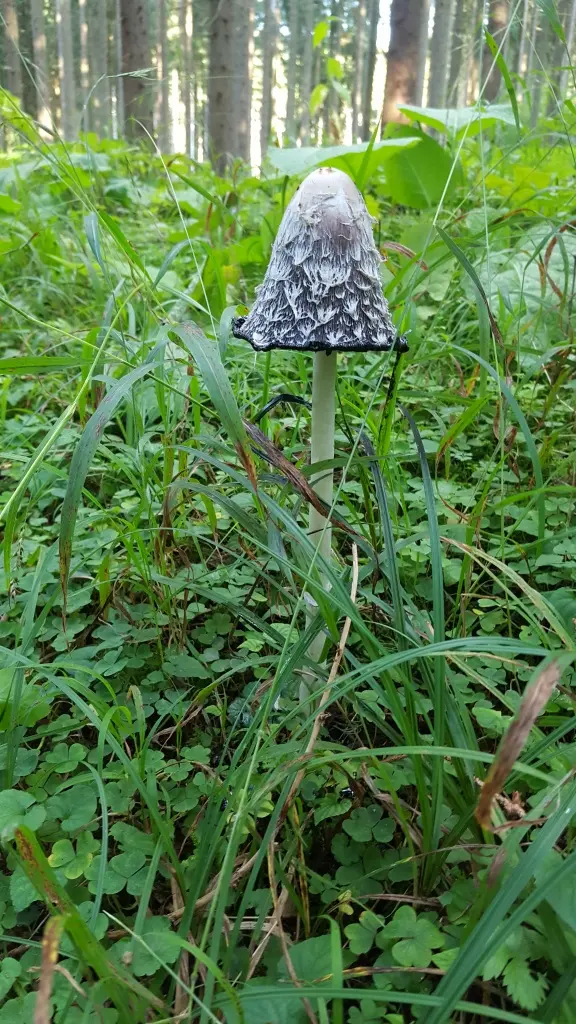
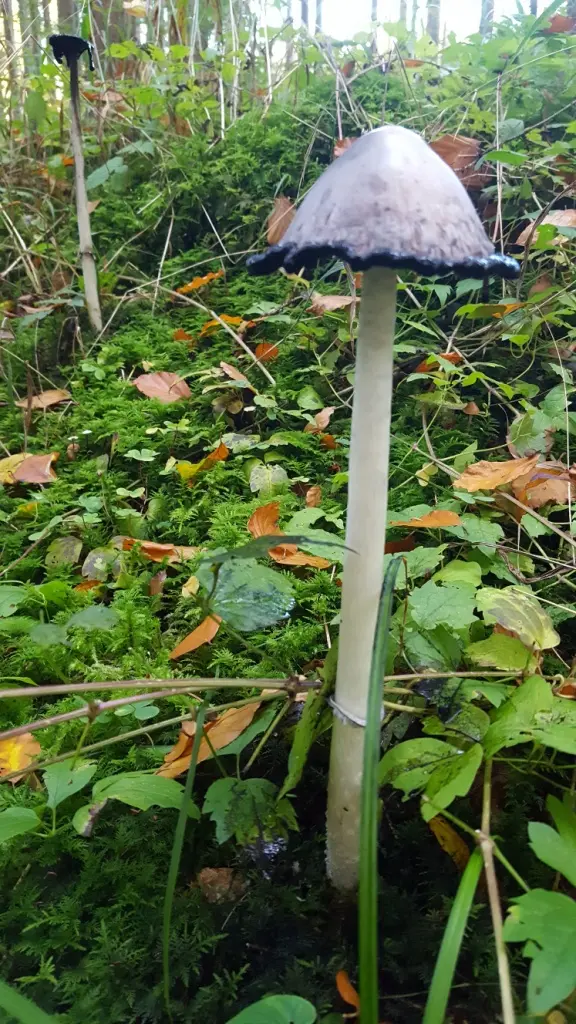
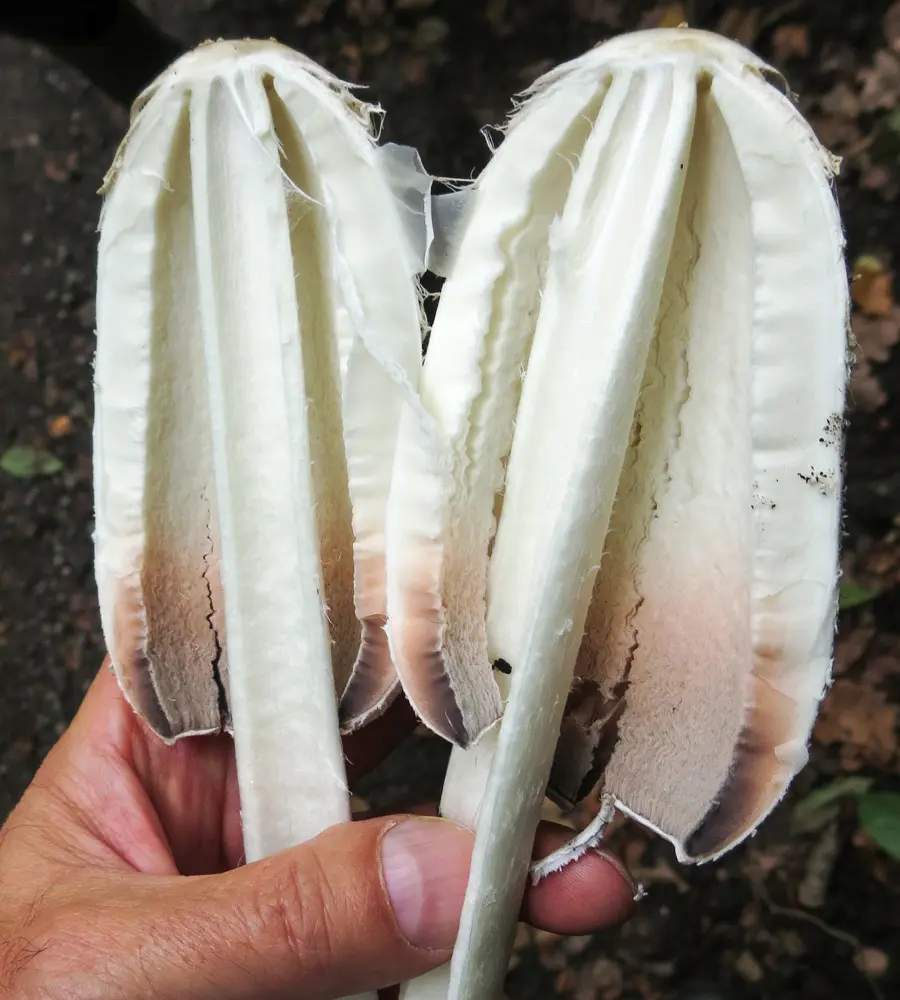
Tintlinge – sonderbare Gesellen am Waldrand
The tintlings are, so to speak, cousins of the button mushroom (Egerling), they are counted among the Agaricaceae or Agaricomycetidae. However, from a scientific point of view, the relationships are not so clear-cut. Several tintling representatives are more closely related to other species, even other genera, than to other tintlings. Among them all, the crested tintling is the most similar to the tiger tintling and the only one that is edible without restriction. The folded tintling, its closest relative in terms of habitus, is very different in appearance to the star of the genus, grey and with longitudinal folds, it looks like a haggard beggar next to the magnificent crested tintling. It can also be eaten, but you must refrain from drinking alcohol for a while before and after the meal, otherwise a veritable poisoning will occur. The crested mint also contains a certain amount of coprine, which has a toxic effect in combination with alcohol, but the doses are too low to have a noticeable effect.
The woodpecker tintling with its brown and white cross-striped or spotted fruiting body is also conspicuous, as is the much smaller mica tintling, which grows in large clusters in the dark. If a mysterious, green-coloured people appear at night between tree trunks or in meadows, the cause is probably the mica tintling. The mica toadstool is edible as a soup mushroom when young, but a strict alcohol warning also applies here.
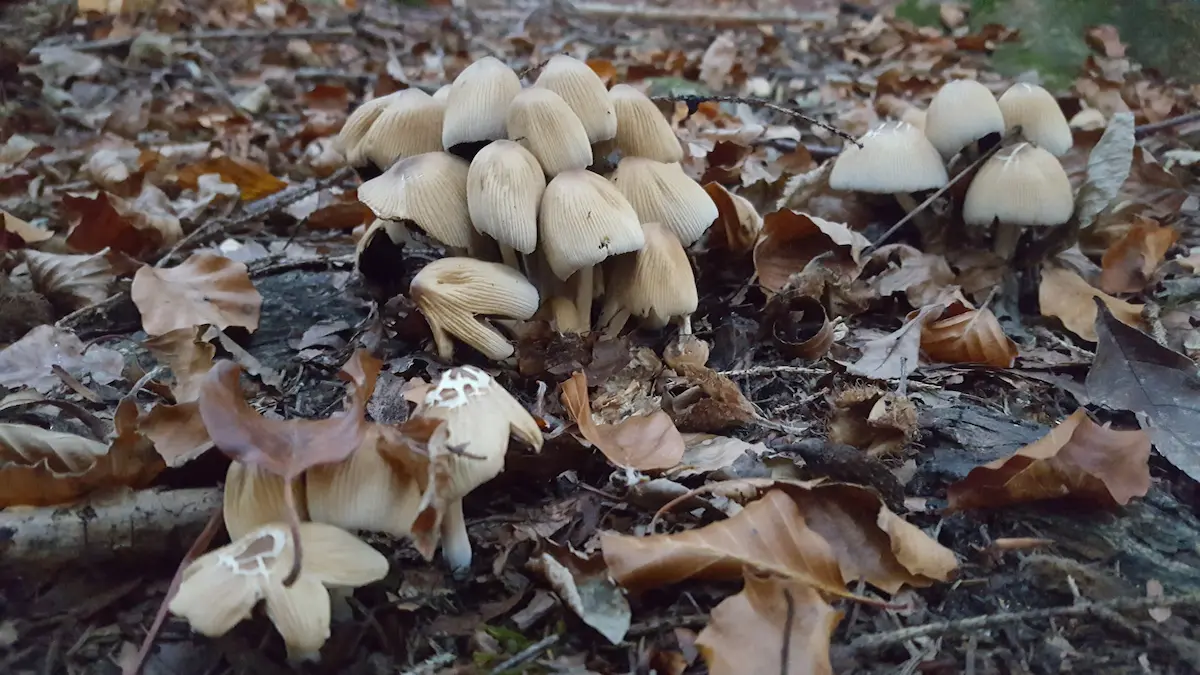
Benefits for people
When people still wrote their letters with quill pens and ink, they often used tints. This has enabled historians to locate or date letters by analysing the DNA of the ink. As a traditional remedy, especially in Far Eastern medicine, the crested tintling is also valued as a blood pressure reducer and for its ability to trap free radicals in the tissue and lower blood sugar levels. It also stimulates digestion and inhibits the growth of tumours. Hence its name as a vitamin mushroom. The crested tintling can be cultivated and can therefore provide several rich harvests a year on straw in the garden, for example.
A transient ‘robber’
In fact, the “asparagus” is a predator that the nematodes in the soil would be afraid of, if they could be afraid. The mycelium of the crested asparagus, i.e. the actual fungus, forms spherical trapping organs in the soil, which literally go on the hunt for nematodes. If such a trapping organ touches a worm, it injects a toxin into its victim and the hyphae (fungal threads) penetrate the corpse and digest it. Otherwise, it draws its nutrients from the soil, which is preferably enriched with nutrients.
Ecology
Fungi are neither animals nor plants; they form a kind of intermediate kingdom, from the stately large mushroom to the microscopically small slime mold. As they do not photosynthesize, they have to obtain their energy externally, mainly from (dead) plants. Together with microorganisms living in the soil, they are the great recyclers in forests and meadows and therefore play an important role in the cycle of life. They decompose dead wood and other organic material and thus ensure a constant supply of humus. They also often form a symbiotic relationship with trees, exchanging minerals and water for sugar or sometimes parasitizing on living plants and animals.
https://www.dgfm-ev.de/pilz-des-jahres/2024-schopf-tintling
Text: Werner Köstle
Pictures: Author (3), DGfM/Dr. Rita Lüder (2)

